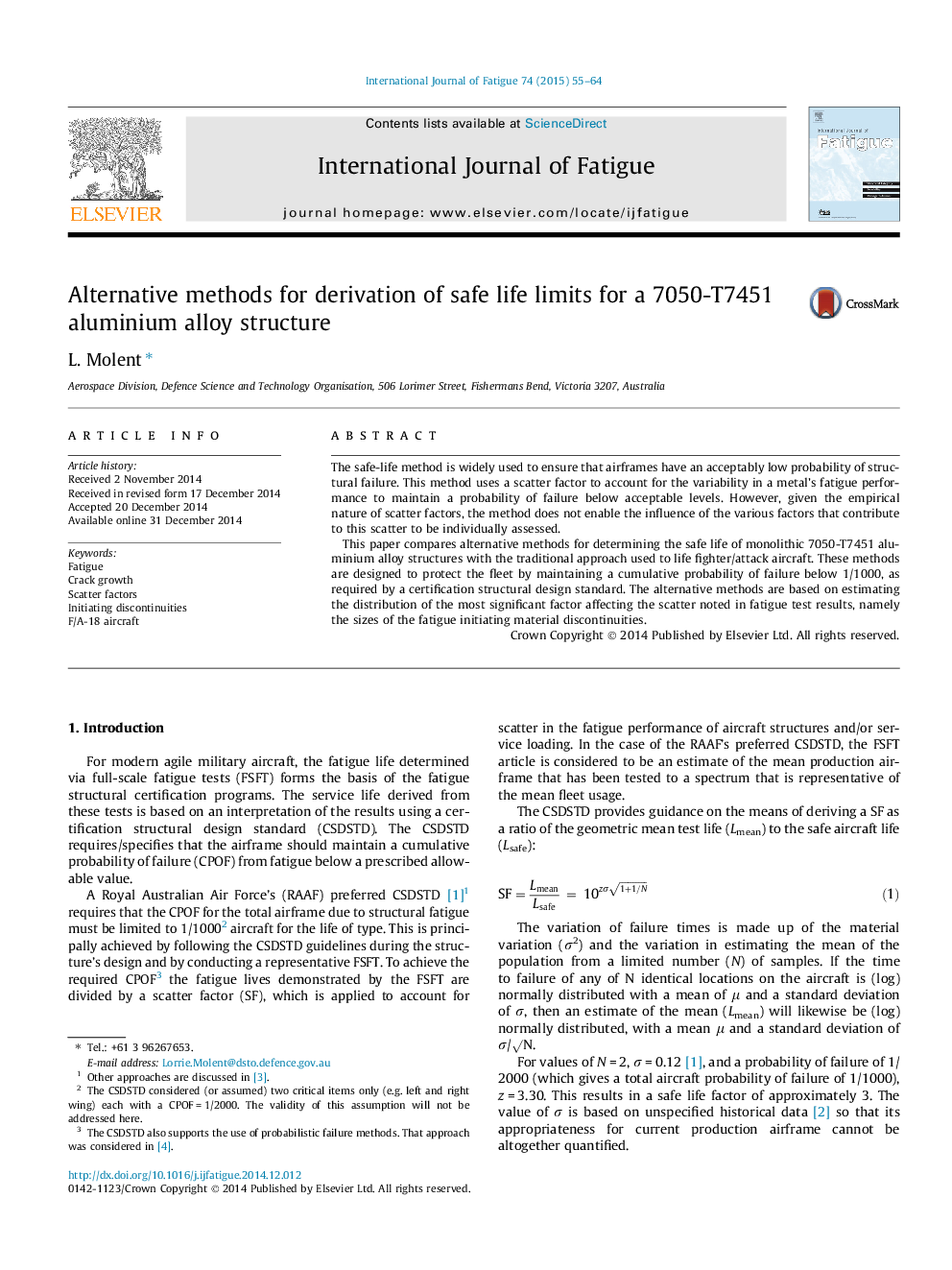| Article ID | Journal | Published Year | Pages | File Type |
|---|---|---|---|---|
| 776660 | International Journal of Fatigue | 2015 | 10 Pages |
•Two alternative methods supporting extant scatter factor based safe-life determinations are presented.•These are based on Equivalent Pre-crack Sizes (EPS) of fatigue initiating discontinuities.•The hypothesis is the EPS distribution variability is the main contributor to material fatigue life scatter.•It is postulated that one of the new methods may be used in lieu of a fatigue test result.
The safe-life method is widely used to ensure that airframes have an acceptably low probability of structural failure. This method uses a scatter factor to account for the variability in a metal’s fatigue performance to maintain a probability of failure below acceptable levels. However, given the empirical nature of scatter factors, the method does not enable the influence of the various factors that contribute to this scatter to be individually assessed.This paper compares alternative methods for determining the safe life of monolithic 7050-T7451 aluminium alloy structures with the traditional approach used to life fighter/attack aircraft. These methods are designed to protect the fleet by maintaining a cumulative probability of failure below 1/1000, as required by a certification structural design standard. The alternative methods are based on estimating the distribution of the most significant factor affecting the scatter noted in fatigue test results, namely the sizes of the fatigue initiating material discontinuities.
